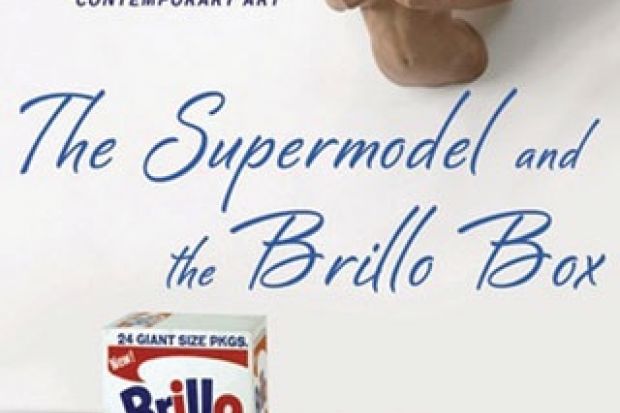Why is some art so overpriced and coveted by collectors, while other work attracts hardly any attention, let alone market value? The question is not a new one, and as Don Thompson shows in this look at the contemporary art market, and in particular post-2008, there are no easy answers. Outsiders hoping to gain insights into the world of leading high-end art dealers, auctioneers and star artists have always found it a difficult, if not impossible, task. And yet insights of this kind are precisely what Thompson has painstakingly achieved. In an extremely well-documented book underpinned by thorough research based not only on a wealth of secondary sources but also on first-hand access to key players at the top end of the contemporary art market, the author reveals himself as someone who is passionate about contemporary art, and is himself a collector. There is no doubt that The Supermodel and the Brillo Box has benefited from that passion.
Thompson is an economist interested in “peculiar economics”; in other words, markets that defy the laws of neoclassical economic thinking. The reasons people are prepared to pay high prices for contemporary art are linked to the function art performs in their lives. But the initial impetus for the “need” to own a specific work of art, as Thompson argues, lies in its back story. Such narratives are framed by the provenance and trajectory of an artwork, and whether it has been owned by a distinguished collector, sold at a reputable auction house or art dealer, or created by a well-known artist. Thompson cites experiments by cognitive scientists that indicate how certain back stories can trigger a strong response to a given work – and it is not dissimilar to the reaction when subjects are shown a chocolate truffle.
The book is replete with examples of the jobs that art is hired to do. For some people – collector Charles Saatchi, art dealer Larry Gagosian and Damien Hirst, the star artist-cum-entrepreneur par excellence – art is mainly a business transaction designed to generate profit. But Thompson’s most moving examples are those that defy the art-as-business approach. US art collectors Herbert and Dorothy Vogel, a postal worker and a librarian respectively, built an impressive contemporary art collection on a very small budget over several decades by establishing direct contact with artists, benefiting from discounts and paying in instalments. Had they been inclined to sell it, they could have been millionaires many times over. Instead in 1991 they donated their entire collection to the National Gallery of Art in Washington.
For me, this book’s underlying argument does not differ greatly from Pierre Bourdieu’s theory of the art market, in which the value of art is no more than the collective “belief in the value of art”. Nonetheless, Thompson makes a stimulating case for the need to keep researching and redefining how the boundaries of contemporary art value are erected, protected and at times destroyed by a selected few. His insider knowledge of the market, valuable research and wealth of detail contribute to a refreshing and up-to-date work informed not only by economics, but the social sciences and the arts more generally.
The Supermodel and the Brillo Box: Back Stories and Peculiar Economics from the World of Contemporary Art
By Don Thompson
Palgrave Macmillan 288pp, £16.99
ISBN 97811379088
Published 6 May 2014
Register to continue
Why register?
- Registration is free and only takes a moment
- Once registered, you can read 3 articles a month
- Sign up for our newsletter
Subscribe
Or subscribe for unlimited access to:
- Unlimited access to news, views, insights & reviews
- Digital editions
- Digital access to THE’s university and college rankings analysis
Already registered or a current subscriber? Login





